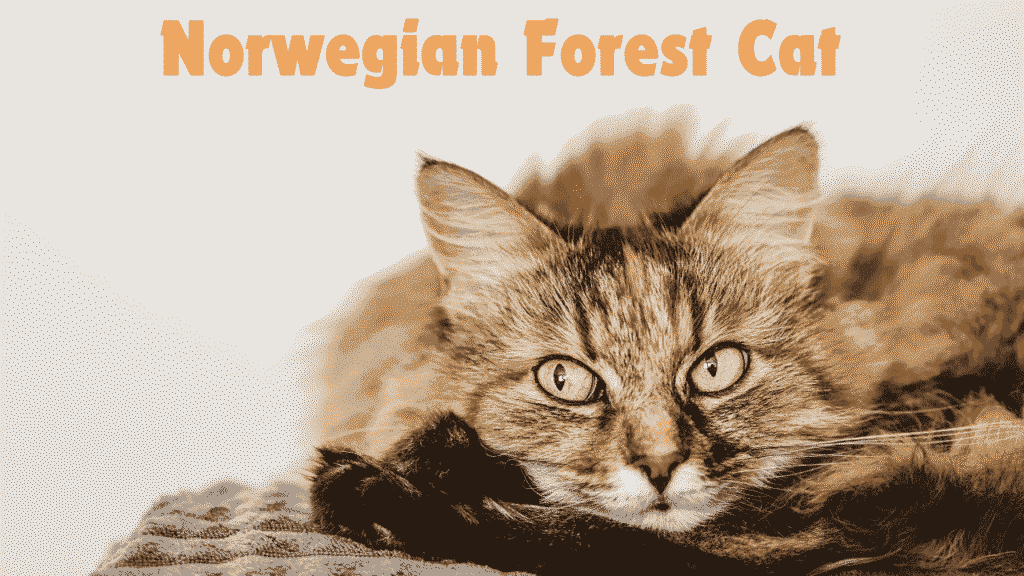When it comes to choosing the perfect feline companion, the Turkish Angora and the Norwegian Forest Cat stand out as two of the most admired and sought-after breeds. Both cats captivate with their unique characteristics, stunning beauty, and enchanting personalities. In this article, we delve into a detailed comparison of these two magnificent breeds to help you make an informed choice.
Origins and History
Turkish Angora: A Breed of Ancient Elegance
Originating from Turkey, the Turkish Angora has been adored for generations, holding a cherished place in the nation’s history. This breed’s lineage traces back to Ankara (historically known as Angora), giving the cat its name. With records dating back to the 15th century, the Turkish Angora has long been associated with royalty and nobility. These cats are considered a national treasure in Turkey and are often linked to ancient folklore.
Norwegian Forest Cat: Nordic Mythology Come to Life
The Norwegian Forest Cat, also known as “Wegie,” has its roots in the Scandinavian forests. This breed’s history is steeped in Nordic myths, where they are believed to have accompanied Viking explorers. Their survival in harsh Nordic climates over centuries has contributed to their resilient and robust physique, making them well-adapted to cold weather.
Physical Appearance
Turkish Angora: Graceful and Sleek
- Coat: The Turkish Angora boasts a silky, single-layer coat that is medium to long in length. The fur requires minimal grooming and exudes elegance.
- Body Type: This breed is known for its slim, fine-boned, and muscular physique. They are light and agile, with an almost ballerina-like grace.
- Eyes: Their almond-shaped eyes are a standout feature, coming in stunning shades like blue, green, amber, or odd-eye (one blue and one green/amber).
- Ears: Large, pointed ears add to their alert and curious expression.
- Size: Turkish Angoras are generally small to medium-sized, weighing between 5-10 pounds.
Norwegian Forest Cat: Rugged and Majestic
- Coat: The Norwegian Forest Cat boasts a thick, double-layered coat featuring a water-resistant outer layer and a plush undercoat. This luxurious fur is perfect for cold climates.
- Body Type: They are solidly built with a muscular frame. Their impressive size and luxurious bushy tail lend them a regal and majestic presence.
- Eyes: Expressive and oval-shaped, their eyes come in shades of green, gold, or copper.
- Ears: Their large, tufted ears resemble lynx ears, adding to their wild allure.
- Size: As a large breed, Norwegian Forest Cats typically weigh 8-18 pounds.

Temperament and Personality
Turkish Angora: Intelligent and Playful
Turkish Angoras are celebrated for their keen intelligence and lively, playful nature. They create deep connections with their human companions and thrive on being the focus of attention. This breed thrives on interaction and is often described as being dog-like in their loyalty. Turkish Angoras are active, curious, and love engaging in games or exploring their surroundings.
Norwegian Forest Cat: Independent Yet Affectionate
Norwegian Forest Cats are equally affectionate but have a more independent streak. They are calm, gentle, and tend to get along well with other pets and children. Their relaxed demeanor makes them ideal family companions. While they enjoy attention, they are also content spending time alone, making them ideal for busy households.
Care and Maintenance
Turkish Angora
- Grooming: Their single-layer coat requires minimal grooming. Weekly brushing is sufficient to keep their fur sleek and tangle-free.
- Exercise: This energetic breed loves playtime. Interactive toys and climbing structures are great for keeping them engaged.
- Health: Turkish Angoras are generally healthy but can be prone to hypertrophic cardiomyopathy (HCM) and deafness, especially in white cats with blue eyes.
Norwegian Forest Cat
- Grooming: Due to their dense double coat, they require more grooming—twice a week is ideal, especially during shedding seasons.
- Exercise: While less active than Turkish Angoras, Norwegian Forest Cats enjoy climbing and exploring. A durable scratching post or a reliable cat tree is essential.
- Health: They are susceptible to hip dysplasia and glycogen storage disease type IV, so regular veterinary check-ups are recommended.

Adaptability and Environment
Turkish Angora
Turkish Angoras adapt well to indoor living and prefer a warm, cozy environment. They are best suited to homes where they can receive plenty of attention and affection. This breed can thrive in smaller spaces as long as they have ample mental stimulation.
Norwegian Forest Cat
Thanks to their rugged origins, Norwegian Forest Cats are more adaptable to colder climates and outdoor environments. They are well-suited for homes with large spaces where they can roam, climb, and explore.
Which Breed is Right for You?
- Choose a Turkish Angora if you prefer a playful, people-oriented cat that thrives on interaction. Their elegant appearance and lively personality make them perfect for active households.
- Opt for a Norwegian Forest Cat if you desire a larger, more independent cat with a calm and affectionate demeanor. Their robust nature and majestic beauty are ideal for families seeking a low-maintenance yet engaging companion.
Conclusion
Both the Turkish Angora and Norwegian Forest Cat are extraordinary breeds with unique traits and qualities. Whether you are drawn to the Turkish Angora’s elegance and intelligence or the Norwegian Forest Cat’s majestic resilience and gentle nature, either choice is sure to bring joy and companionship into your life.
# : if you want to more infformation of this topic to click here
# : READ ANOTHER POSTS
1 : Are Maine Coon Cats Hypoallergenic? A Comprehensive Guide
2 : Hypoallergenic Cat Breeds: The Siberian Cat
3 : The Majestic Black Maine Coon Cat: An In-Depth Exploration
4 : Top 10 Cat Breeds That Look Like Leopards: A Comprehensive Guide


